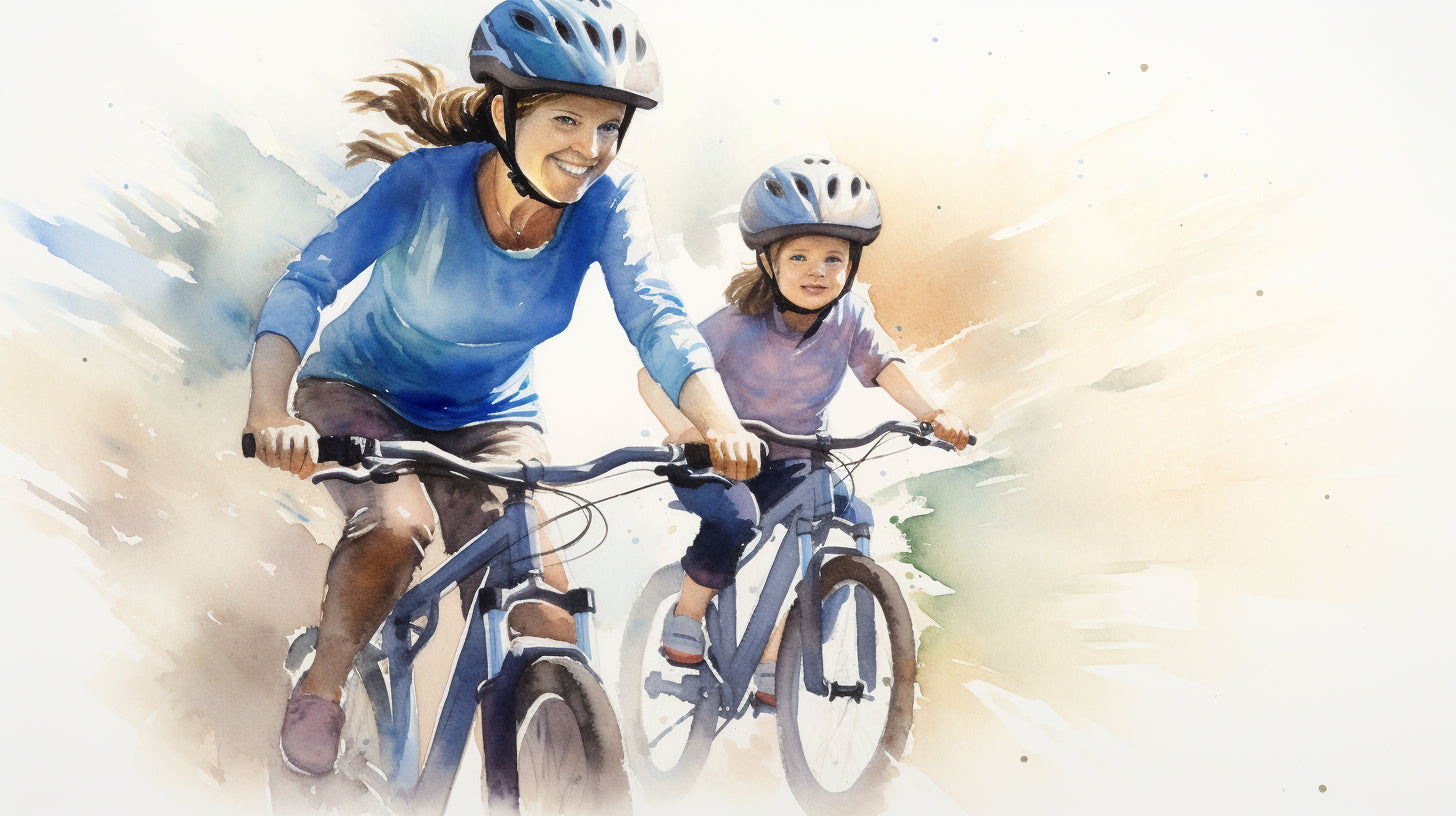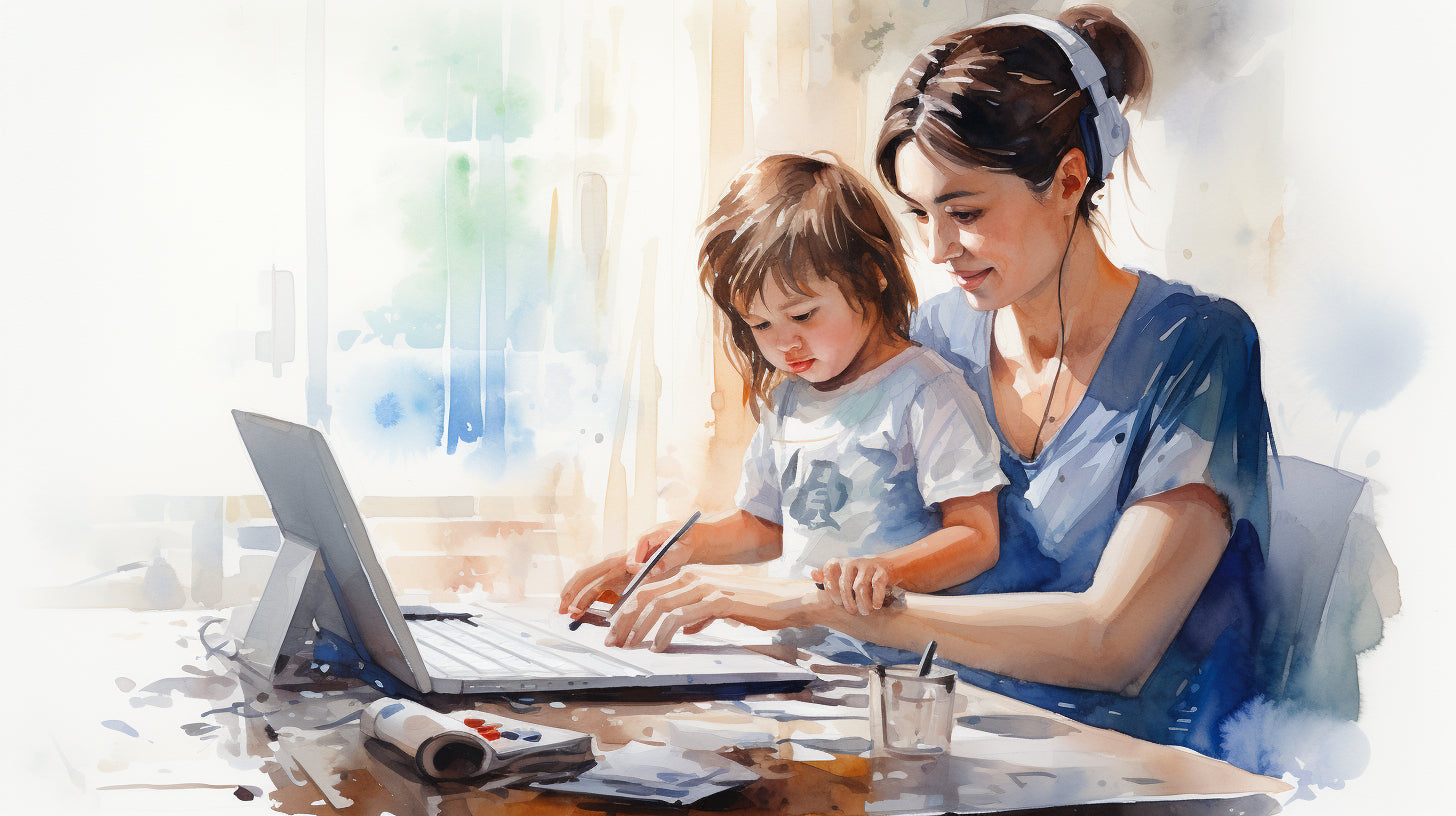Welcome to this guide on outdoor safety measures for stay-at-home moms! As a mother, keeping your family secure is always a top priority. Whether you're playing in the backyard, going for a walk, or planning a family outing, it's essential to take precautions to ensure the safety of your loved ones.
This guide will provide you with valuable tips and information on how to create a safe outdoor environment for your family. From assessing your surroundings to teaching your children about outdoor safety, we'll cover a range of topics that are crucial for every stay-at-home mom.
So, let's dive in and discover the best ways to keep your family secure while enjoying the great outdoors!
Assessing Your Surroundings
When it comes to outdoor safety for stay-at-home moms, a crucial step is to assess your surroundings. By identifying potential safety hazards and taking necessary precautions, you can create a secure environment for your family. Here are some key areas to focus on when assessing your surroundings:
Identifying Potential Safety Hazards
- Take a walk around your property and look for any potential dangers. This includes checking for uneven surfaces, loose handrails, or tripping hazards.
- Inspect your outdoor play areas for any sharp objects, broken equipment, or exposed nails.
- Be mindful of any potential hazards such as pools, ponds, or open bodies of water. Install safety measures like fences and pool covers to prevent accidents.
- Keep an eye out for poisonous plants or weeds that could be harmful to your children or pets. Familiarize yourself with these plants and take necessary steps to remove them.
Securing Outdoor Entrances and Exits
- Ensure that all outdoor entrances and exits are secure. Install sturdy locks on gates and fences to prevent unauthorized access.
- Consider installing a security camera near your entrances to deter intruders and monitor activity.
- Make sure that doors and windows are equipped with reliable locks and that they are in good working condition.
- Teach your children about the importance of keeping doors and gates closed and locked at all times.
Installing Outdoor Lighting
- Adequate outdoor lighting is essential for keeping your surroundings safe and secure.
- Install motion sensor lights near entrances and in areas that are poorly lit. This will help deter burglars and provide better visibility during nighttime.
- Consider solar-powered lights for pathways and driveways to ensure visibility and prevent accidents.
- Regularly inspect and maintain outdoor lighting fixtures to ensure they are functioning properly.
By being proactive and thorough in assessing your surroundings, you can significantly reduce the risk of accidents and create a safe outdoor environment for your family. Remember, prevention is key when it comes to outdoor safety.
Teaching Your Children About Outdoor Safety
As a stay-at-home mom, one of your top priorities is keeping your family safe, especially when it comes to outdoor activities. Teaching your children about outdoor safety is crucial to ensure that they are equipped with the knowledge and skills to navigate their surroundings confidently. Here are some essential tips for teaching your children about outdoor safety:
Road and Traffic Safety
- Road and traffic safety is an important aspect of outdoor safety that children need to understand from a young age. Teach your children the following road safety rules:
- Look both ways before crossing the road.
- Use designated crosswalks and pedestrian crossings.
- Follow traffic signals and signs.
- Walk on the sidewalk when available.
- Hold hands with an adult when crossing the road.
Stranger Danger Awareness
- Teaching your children about stranger danger is crucial to help them distinguish between safe and unsafe situations. Here are a few strategies to teach them:
- Teach your children not to talk to strangers or accept gifts or rides from them.
- Role-play scenarios with your children to help them practice saying "no" and running away in uncomfortable situations.
- Help your children identify safe adults they can trust, such as police officers, teachers, or other parents.
Recognizing Poisonous Plants and Insects
- Being able to recognize poisonous plants and insects is essential for outdoor safety. Teach your children to:
- Identify common poisonous plants, such as poison ivy or poison oak, and avoid touching them.
- Be cautious around bees, wasps, and other insects. Teach them to stay calm and move away slowly if they encounter a buzzing insect.
Remember, teaching your children about outdoor safety is an ongoing process. Reinforce the importance of these safety measures regularly and use age-appropriate language and examples to help them understand better. By equipping them with the necessary knowledge, you're empowering them to make safer choices while enjoying outdoor activities.
Creating a Safe Outdoor Play Area
As a stay-at-home mom, you want to provide your children with a safe and stimulating outdoor play area. Not only does it allow them to get some fresh air and exercise, but it also encourages their imagination and creativity. Here are some tips for creating a safe outdoor play area that will give you peace of mind while your children have fun.
Choosing Safe and Age-Appropriate Outdoor Toys
When selecting outdoor toys for your children, it's important to consider their age and developmental stage. Here are some things to keep in mind:
- Age appropriateness: Make sure the toys you choose are suitable for your child's age. Avoid toys that have small parts which could pose a choking hazard for younger children.
- Safety standards: Look for toys that meet safety standards and are made from non-toxic materials. Check for labels such as ASTM or CPSC certification.
- Sturdy construction: Opt for toys that are well-made and able to withstand outdoor conditions. Avoid toys that have sharp edges or broken parts that could cause injuries.
- Proper maintenance: Regularly inspect outdoor toys for any signs of wear and tear. Replace or repair damaged toys to ensure they remain safe for use.
Maintaining and Inspecting Outdoor Structures
If you have outdoor structures like swing sets, slides, or playhouses, it's crucial to maintain and inspect them regularly. Here's what you should do:
- Check for stability: Ensure that all structures are securely anchored to the ground and cannot tip over easily. Inspect the stability of wooden structures, and tighten bolts and screws as needed.
- Inspect for sharp edges: Look for any sharp edges or protruding nails that could potentially harm your children. Sand down any rough spots or cover them with protective caps.
- Clean and sanitize: Regularly clean and sanitize outdoor play structures to prevent the buildup of dirt, debris, and bacteria. Use mild soap and water to clean surfaces, and hose down structures to remove dirt and grime.
Ensuring Proper Supervision
No matter how safe your outdoor play area is, it's essential to provide proper supervision when your children are playing outside. Here are some guidelines to follow:
- Stay within sight: Always supervise your children when they are playing outdoors. Maintain visual contact and be within earshot in case they need assistance or encounter any problems.
- Set boundaries: Establish clear boundaries for where your children can play, especially if you have a large outdoor space. Talk to them about staying within those boundaries and explain any potential hazards they should avoid.
- Teach safe play: Instruct your children on how to properly use outdoor toys and equipment. Encourage them to take turns, share, and play safely to minimize the risk of accidents.
Creating a safe outdoor play area for your children is a crucial step in ensuring their overall safety and well-being. By choosing age-appropriate toys, maintaining outdoor structures, and providing proper supervision, you can create an environment that allows your children to have fun and be safe at the same time.
"A safe outdoor play area not only provides an opportunity for children to explore and have fun, but it also promotes their physical and mental development."
Family Outings and Excursions
As a stay-at-home mom, planning outdoor activities for your family can be a great way to spend quality time together and create lasting memories. However, it's important to prioritize safety when venturing outside of your home. Here are some tips to ensure safe and enjoyable family outings and excursions:
Planning and Researching Safe Outdoor Destinations
Before setting out on a family outing, it's crucial to choose a safe and appropriate outdoor destination. Here are a few things to consider when planning your outing:
- Location: Look for parks, playgrounds, or nature trails that are well-maintained and have a good reputation for safety.
- Facilities: Check if the outdoor destination has clean restrooms, available drinking water, and shaded areas for breaks.
- Reviews: Read online reviews or ask other parents about their experiences at the chosen location to get a better understanding of its safety and suitability for families.
Packing Essential Safety Items
No matter where you're headed, it's important to pack some essential safety items to ensure the well-being of your family. Here are a few items to consider:
- First Aid Kit: Carry a well-stocked first aid kit containing bandages, antiseptic wipes, sunscreen, insect repellent, and any necessary medications.
- Snacks and Water: Pack plenty of healthy snacks and water to keep your family hydrated and energized during the outing.
- Extra Clothing: Bring extra clothing, especially if you're going to a beach or water park, to ensure that your kids stay warm and comfortable.
- Sun Protection: Don't forget to pack hats, sunglasses, and sunscreen to protect your family from harmful sun rays.
Implementing a Buddy System
When going on an outdoor excursion, it's always a good idea to implement a buddy system. Designate a trusted adult to be each child's buddy and encourage them to stay together throughout the outing. This can help prevent children from wandering off and getting lost or separated from the group.
Additionally, the buddy system can be applied to older children as well. Encourage siblings or close friends to buddy up and keep an eye out for each other during the outing.
Remember, accidents can happen even in the most well-planned outings. By implementing a buddy system, you can have an extra layer of security and peace of mind.
Taking the time to plan and prepare for family outings and excursions can help ensure a safe and enjoyable experience for everyone involved. By selecting safe destinations, packing essential safety items, and implementing a buddy system, you can create positive outdoor experiences that your family will cherish for a lifetime. So, grab your picnic basket, put on your walking shoes, and get ready for some unforgettable adventures!
First Aid and Emergency Preparedness
When it comes to outdoor safety, it's crucial to be prepared for unexpected emergencies. As a stay-at-home mom, having knowledge of first aid techniques and having an emergency action plan in place can make a significant difference in keeping your family safe. Here are some tips for first aid and emergency preparedness:
Keeping a Well-Stocked First Aid Kit
Having a well-stocked first aid kit is essential for any outdoor activity. Make sure to regularly check and replenish your first aid kit so that it is always ready for use. Some essential items that should be included in your first aid kit are:
- Band-aids in various sizes for small cuts and scrapes.
- Antiseptic wipes or solution to clean wounds and prevent infection.
- Gauze pads and adhesive tape for larger wounds or to secure dressings.
- Elastic bandages for sprains or strains.
- Tweezers to remove splinters or ticks.
- Scissors to cut tape or clothing in case of an emergency.
- Disposable gloves to protect yourself when administering first aid.
Learning Basic First Aid Techniques
In emergency situations, having basic first aid knowledge can be the difference between a minor injury and a more severe one. Consider taking a first aid course or getting certified in CPR (Cardiopulmonary Resuscitation) to ensure that you know how to respond in case of sudden illness, accidents, or injuries. Some basic first aid techniques to learn include:
- CPR for infants, children, and adults.
- How to stop bleeding and apply pressure to wounds.
- Treating burns with cool water and covering them with a clean cloth.
- Splinting fractures with a rigid object to immobilize the injured limb.
- Recognizing the signs of common emergencies such as heart attacks, strokes, or allergic reactions.
Creating an Emergency Action Plan
Having an emergency action plan in place is critical for effectively responding to any emergency situation. Here's how you can create an emergency action plan for your family:
- Identify potential emergency scenarios such as severe weather, accidents, or medical emergencies.
- Designate a meeting point where your family can gather in case of an emergency.
- Assign roles and responsibilities to each family member, so everyone knows what to do in an emergency.
- Teach your children how to call emergency services and provide them with important contact numbers.
- Practice emergency drills regularly to ensure everyone knows their roles and can respond quickly in an emergency.
By being proactive in first aid and emergency preparedness, you can have peace of mind knowing that you are equipped to handle any unexpected situations that may arise during your outdoor adventures.
"Accidents happen, but being prepared can make all the difference in keeping your loved ones safe."
Utilizing Technology for Safety
In today's digital age, technology has become an integral part of our lives. From staying connected with loved ones to getting information at our fingertips, technology has made our lives more convenient and efficient. But did you know that technology can also play a crucial role in outdoor safety for stay-at-home moms and their families? In this section, we will explore various ways you can utilize technology to enhance the safety of your outdoor activities.
Home Security Systems and Surveillance
One of the most effective ways to ensure the safety of your home and family is by installing a reliable home security system. These systems provide a sense of security and peace of mind, allowing you to monitor and protect your home even when you're not there. Here are some key features of home security systems:
- Video surveillance: With cameras strategically placed around your property, you can monitor the outdoor areas in real-time or playback recordings. This can help deter potential intruders and provide evidence in case of any incidents.
- Motion sensors: Motion sensors can detect any movement outside your home and trigger an alarm, alerting you and potentially scaring away any unwanted visitors.
- Smartphone integration: Many modern home security systems come with smartphone apps that allow you to control and monitor your system remotely. You can receive real-time alerts, view live video feeds, and even arm or disarm the system from anywhere.
Investing in a home security system can be a valuable asset, providing an extra layer of protection for your family and securing your outdoor spaces.
Monitoring Apps for Outdoor Activities
As a stay-at-home mom, it's important to keep an eye on your children, especially when they are playing outdoors. Fortunately, there are various monitoring apps available that can help you track their location and ensure their safety. Here are a few examples:
- GPS tracking apps: These apps allow you to track the location of your child's smartphone, so you know where they are at all times. Some apps even let you set up geofences, which will send you an alert if your child leaves a designated area.
- Child safety apps: These apps provide a range of features like emergency SOS buttons, panic alerts, and the ability to share their location with trusted contacts. They also allow you to set up safe zones and receive notifications when your child enters or leaves those areas.
- Fitness tracker apps: Some fitness trackers designed for kids come with built-in GPS, allowing you to track their movements and ensure they are safe during outdoor activities like biking or hiking.
These monitoring apps can give you peace of mind knowing that you can stay connected to your children and ensure their safety, even when they are out of your sight.
"Technology is best when it brings people together." - Matt Mullenweg
In conclusion, technology can be a valuable tool in enhancing outdoor safety for stay-at-home moms and their families. From home security systems to monitoring apps, there are various options available to ensure the protection and well-being of your loved ones. So, embrace the power of technology and use it as a companion in your journey towards a safer outdoor environment for your family.
Engaging the Community for Support
As a stay-at-home mom, it's important to not only keep your family safe but also to engage with the community for support. Building strong connections with your neighbors and participating in community initiatives can help create a safer environment for everyone. Here are some ways you can engage the community for support:
Neighborhood Watch Programs

One effective way to ensure safety in your neighborhood is by joining or starting a Neighborhood Watch program. This program brings together local residents who work collaboratively to keep an eye out for any suspicious activities and report them to the authorities. Neighborhood Watch programs can help deter crime and create a sense of unity among neighbors. By actively participating in these programs, you contribute to the overall safety of your community.
Community Safety Events and Initiatives

Another great way to engage with your community is by participating in safety events and initiatives. Many communities organize safety fairs, workshops, and training sessions that focus on various aspects of personal and home safety. These events provide valuable information, resources, and hands-on training to help you and your family stay safe. By attending and actively participating in these community events, you not only enhance your own knowledge but also contribute to promoting safety awareness within your neighborhood.
Connecting with Other Stay-at-Home Moms

Being a stay-at-home mom can sometimes feel isolating, but connecting with other moms in your community can bring a sense of camaraderie and support. Look out for local mom groups, playgroups, or parenting forums in your area. These platforms provide an opportunity to connect with other moms who are facing similar challenges and concerns. Through these connections, you can share ideas, learn from each other's experiences, and even organize neighborhood activities and playdates, which can promote a safe and supportive environment for both you and your children.
By actively engaging with your community, you not only strengthen the bond among neighbors but also contribute to creating a safer environment for everyone. Remember, a united community is a safe community. So, reach out, get involved, and build relationships with your neighbors. Together, we can make our neighborhoods secure and welcoming for our families.
Conclusion
In conclusion, as a stay-at-home mom, you play a crucial role in keeping your family safe outdoors. By following these outdoor safety measures, you can provide a secure environment for your loved ones and enjoy peace of mind. Remember to constantly assess your surroundings, teach your children about outdoor safety, create a safe play area, plan family outings with safety in mind, be prepared for emergencies, utilize technology for added security, and engage with your community for support.
And if you're looking for an extra layer of personal safety, consider investing in a Personal Safety Alarm from Empowered by Ashley. Our alarm is designed to deter potential attackers and give you a feeling of safety and reassurance. To learn more about our products and how they can empower you, visit our website at empoweredbyashley.com. Stay safe and empowered!
Frequently Asked Questions
-
What are some important outdoor safety measures for stay-at-home moms?
Some important outdoor safety measures for stay-at-home moms include: 1. Teaching your children about road safety, 2. Supervising outdoor playtime, 3. Ensuring proper use of safety gear, like helmets, 4. Keeping an eye out for potential hazards, such as sharp objects or stray animals, and 5. Establishing clear boundaries and rules for outdoor activities.
-
Why is teaching road safety crucial for stay-at-home moms?
Teaching road safety is crucial to keep children safe from accidents while crossing streets or playing near roads. Stay-at-home moms should educate their children about traffic signs, pedestrian rules, and the importance of staying alert and visible to vehicles.
-
How can stay-at-home moms ensure proper supervision during outdoor playtime?
Stay-at-home moms should actively supervise their children during outdoor playtime to minimize the risk of accidents. They can do this by staying engaged, setting boundaries, keeping a watchful eye, and intervening when necessary. It's important to strike a balance between allowing independence and ensuring safety.
-
Why is the use of safety gear, like helmets, important for outdoor activities?
Using safety gear, such as helmets, is crucial to protect against head injuries during outdoor activities like cycling, skating, or playing sports. Stay-at-home moms should make sure their children wear properly fitted helmets and understand the importance of using them every time they engage in such activities.
-
What are some common outdoor hazards that stay-at-home moms should be aware of?
Stay-at-home moms should be aware of common outdoor hazards such as sharp objects, poisonous plants, insect bites or stings, extreme weather conditions, and potential encounters with stray or aggressive animals. Taking necessary precautions and educating children about these hazards can help prevent accidents or injuries.




















Leave a comment
This site is protected by hCaptcha and the hCaptcha Privacy Policy and Terms of Service apply.